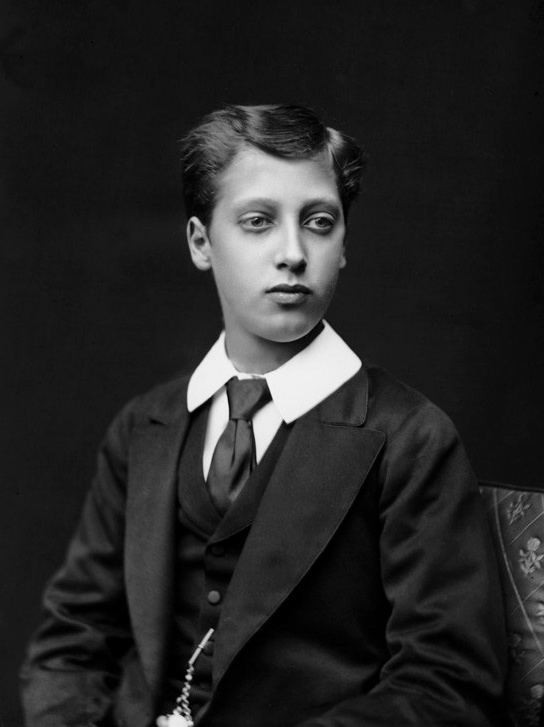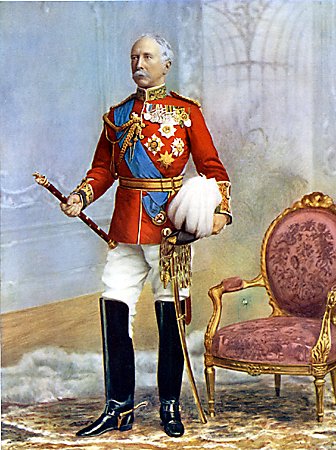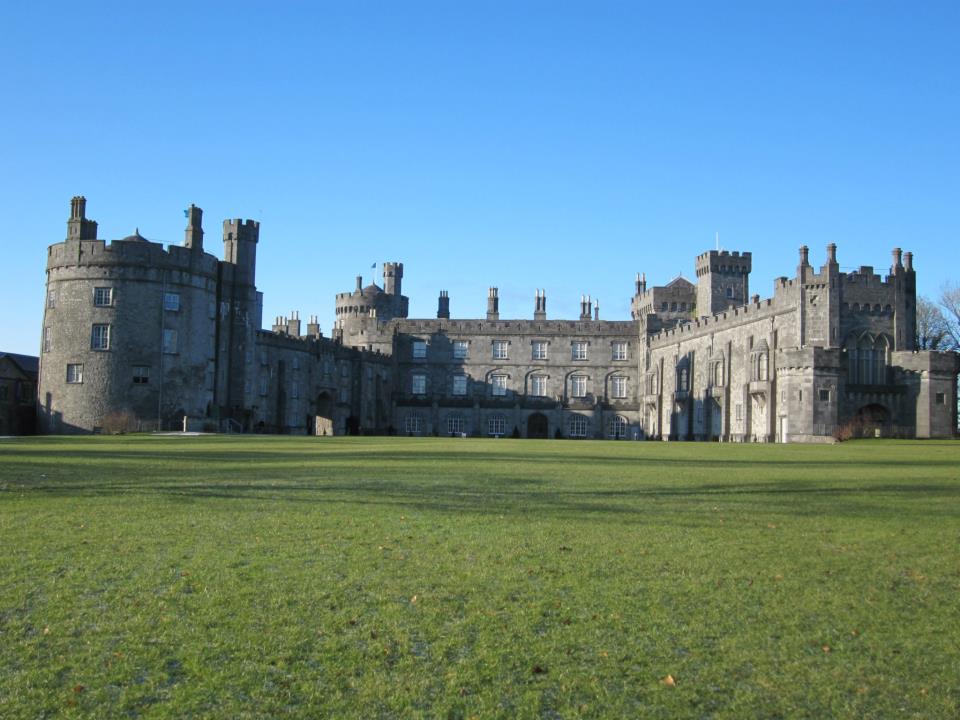|
James Frankfort Manners Browne
General (United Kingdom), General Sir James Frankfort Manners Browne (24 April 1823 – 6 December 1910), Chief Royal Engineer, Colonel-Commandant of Royal Engineers, was an Anglo-Irish officer in the British Army. Origins and education James Frankfort Manners Browne, born in Dublin on 24 April 1823, was the eldest son of Montague Browne, Henry Montague Browne, Dean of Lismore, second son of James Browne, 2nd Baron Kilmaine, James Caulfeild Browne, 2nd Lord Kilmaine. His mother was Catherine Penelope (died 1858), daughter of Lodge de Montmorency, 1st Viscount Frankfort de Montmorency, Lodge Evans Morres, 1st Viscount Frankfort de Montmorency.Vetch 1912, p. 237. Educated at Epsom and at Mr. Miller's at Woolwich, he became a gentleman cadet of the Royal Military Academy, Woolwich on 15 May 1838. On 1 January 1842 he received a commission as second lieutenant in the Royal Engineers. British North America After serving at Woolwich and in Ireland, Browne embarked for Halifa ... [...More Info...] [...Related Items...] OR: [Wikipedia] [Google] [Baidu] |
Alexander Bassano
Alexander Bassano (10 May 1829 – 21 October 1913) was an English photographer who was a leading royal and high society portrait photographer in Victorian London. He is known for his photo of the Earl Kitchener in the '' Lord Kitchener Wants You'' army recruitment poster during the First World War and his photographs of Queen Victoria. Biography Alessandro Bassano was the second youngest child of Italian Clemente Bassano, originally a fishmonger of Cranbourne Street, later an oilman and warehouseman of Jermyn Street, London, and his English wife, Elizabeth Browne. He later anglicised his first name to Alexander. Bassano received early artistic training with artists Augustus Egg and William Beverley. He opened his first studio in 1850 in Regent Street. The studio then moved to Piccadilly 1859–1863, to Pall Mall and then to 25 Old Bond Street in 1877. There was also a Bassano branch studio at 132 King's Road, Brighton from 1893 to 1899. The Old Bond Street studi ... [...More Info...] [...Related Items...] OR: [Wikipedia] [Google] [Baidu] |
Manitoba
, image_map = Manitoba in Canada 2.svg , map_alt = Map showing Manitoba's location in the centre of Southern Canada , Label_map = yes , coordinates = , capital = Winnipeg , largest_city = Winnipeg , largest_metro = Winnipeg Region , official_lang = English , government_type = Parliamentary constitutional monarchy , Viceroy = Anita Neville , ViceroyType = Lieutenant Governor , Premier = Heather Stefanson , Legislature = Legislative Assembly of Manitoba , area_rank = 8th , area_total_km2 = 649950 , area_land_km2 = 548360 , area_water_km2 = 101593 , PercentWater = 15.6 , population_demonym = Manitoban , population_rank = 5th , population_total = 1342153 , population_as_of = 2021 , population_est = 14 ... [...More Info...] [...Related Items...] OR: [Wikipedia] [Google] [Baidu] |
Richard Tylden
Richard is a male given name. It originates, via Old French, from Old Frankish and is a compound of the words descending from Proto-Germanic ''*rīk-'' 'ruler, leader, king' and ''*hardu-'' 'strong, brave, hardy', and it therefore means 'strong in rule'. Nicknames include "Richie", "Dick", "Dickon", " Dickie", "Rich", "Rick", "Rico", "Ricky", and more. Richard is a common English, German and French male name. It's also used in many more languages, particularly Germanic, such as Norwegian, Danish, Swedish, Icelandic, and Dutch, as well as other languages including Irish, Scottish, Welsh and Finnish. Richard is cognate with variants of the name in other European languages, such as the Swedish "Rickard", the Catalan "Ricard" and the Italian "Riccardo", among others (see comprehensive variant list below). People named Richard Multiple people with the same name * Richard Andersen (other) * Richard Anderson (other) * Richard Cartwright (other) * Ri ... [...More Info...] [...Related Items...] OR: [Wikipedia] [Google] [Baidu] |
FitzRoy Somerset, 1st Baron Raglan
Field Marshal FitzRoy James Henry Somerset, 1st Baron Raglan, (30 September 1788 – 28 June 1855), known before 1852 as Lord FitzRoy Somerset, was a British Army officer. When a junior officer, he served in the Peninsular War and the Waterloo campaign, latterly as military secretary to the Duke of Wellington. He also took part in politics as Tory Member of Parliament for Truro, before becoming Master-General of the Ordnance. He became commander of the British troops sent to the Crimea in 1854: his primary objective was to defend Constantinople, and he was also ordered to besiege the Russian port of Sevastopol. After an early success at the Battle of Alma, a failure to deliver orders with sufficient clarity caused the fateful Charge of the Light Brigade at the Battle of Balaclava. Despite further success at the Battle of Inkerman, a poorly coordinated allied assault on Sevastopol in June 1855 was a complete failure. Raglan died later that month, after having dysentery and ... [...More Info...] [...Related Items...] OR: [Wikipedia] [Google] [Baidu] |
Harry Jones (British Army Officer)
General Sir Henry David Jones DCL (14 March 1791 – 4 August 1866) was a British Army officer who became Governor of the Royal Military College, Sandhurst. Life He was the fifth son of John Jones by his wife, Mary, daughter of John Roberts, Esq., of Landguard Fort, an officer 29th Foot, and was brother of Major-General Sir John Thomas Jones, Bart., KCB, and uncle of Sir Willoughby Jones, Bart., of Cranmer Hall, Fakenham, Norfolk. Educated at the Royal Military Academy, Woolwich, Jones was commissioned into the Royal Engineers in September 1808. In 1809 he was involved in the attack on the fortress at Flushing during the Walcheren Campaign. He then took part in the defence of Cadiz in 1809, the Siege of Badajoz in 1812, the Battle of Vitoria in 1813 and the Battle of Nivelle in 1813. He was wounded while leading the forlorn hope during the first assault at the Siege of San Sebastián in September 1813. In February, 1815, he joined the army under General John Lambert ... [...More Info...] [...Related Items...] OR: [Wikipedia] [Google] [Baidu] |
90th Regiment Of Foot (Perthshire Volunteers)
The 90th Perthshire Light Infantry was a Scottish light infantry regiment of the British Army, raised in 1794. Under the Childers Reforms it amalgamated with the 26th (Cameronian) Regiment of Foot to form the Cameronians (Scottish Rifles) in 1881. History Formation The regiment was raised in Scotland by Thomas Graham as the 90th Regiment of Foot, in response to the threat posed by the French Revolution, on 10 February 1794. Graham was given permission to uniform and drill his regiment as a light infantry battalion. It embarked as part of the Quiberon Expedition and took part in the capture of the Île d'Yeu in September 1795. The following year the regiment was dispatched to support the French Royalist Lieutenant-general François de Charette in his struggle with the Republicans. It took part in the Capture of Minorca in November 1798 and then sailed for Malta in November 1800 before transferring to Egypt in March 1801 for service in the Egyptian Campaign. It saw action at t ... [...More Info...] [...Related Items...] OR: [Wikipedia] [Google] [Baidu] |
Garnet Wolseley, 1st Viscount Wolseley
Field Marshal Garnet Joseph Wolseley, 1st Viscount Wolseley, (4 June 183325 March 1913), was an Anglo-Irish officer in the British Army. He became one of the most influential and admired British generals after a series of successes in Canada, West Africa and Egypt, followed by a central role in modernizing the British Army in promoting efficiency. He served in Burma, the Crimean War, the Indian Mutiny, China, Canada and widely throughout Africa—including his Ashanti campaign (1873–1874) and the Nile Expedition against Mahdist Sudan in 1884–85. Wolseley served as Commander-in-Chief of the Forces from 1895 to 1900. His reputation for efficiency led to the late 19th century English phrase "everything's all Sir Garnet", meaning, "All is in order." Early life and education Lord Wolseley was born into a prominent Anglo-Irish family in Dublin, the eldest son of Major Garnet Joseph Wolseley of the King's Own Scottish Borderers (25th Foot) and Frances Anne Wolseley (''née' ... [...More Info...] [...Related Items...] OR: [Wikipedia] [Google] [Baidu] |
Balaklava
Balaklava ( uk, Балаклáва, russian: Балаклáва, crh, Balıqlava, ) is a settlement on the Crimean Peninsula and part of the city of Sevastopol. It is an administrative center of Balaklava Raion that used to be part of the Crimean Oblast before it was transferred to Sevastopol Municipality. Population: History Balaklava has changed possession several times during its history. A settlement at its present location was founded under the name of Symbolon () by the Ancient Greeks, for whom it was an important commercial city. During the Middle Ages, it was controlled by the Byzantine Empire and then by the Genoese who conquered it in 1365. The Byzantines called the town Yamboli and the Genoese named it Cembalo. The Genoese built a large trading empire in both the Mediterranean and the Black Sea, buying slaves in Eastern Europe and shipping them to Egypt via the Crimea, a lucrative market hotly contested with by the Venetians. The ruins of a Genoese fortres ... [...More Info...] [...Related Items...] OR: [Wikipedia] [Google] [Baidu] |
Kilkenny
Kilkenny (). is a city in County Kilkenny, Ireland. It is located in the South-East Region and in the province of Leinster. It is built on both banks of the River Nore. The 2016 census gave the total population of Kilkenny as 26,512. Kilkenny is a tourist destination, and its environs include historic buildings such as Kilkenny Castle, St Canice's Cathedral and round tower, Rothe House, Shee Alms House, Black Abbey, St. Mary's Cathedral, Kilkenny Town Hall, St. Francis Abbey, Grace's Castle, and St. John's Priory. Kilkenny is also known for its craft and design workshops, the Watergate Theatre, public gardens and museums. Annual events include Kilkenny Arts Festival, the Cat Laughs comedy festival and music at the Kilkenny Roots Festival. Kilkenny began with an early 6th-century ecclesiastical foundation within the Kingdom of Ossory. Following the Norman invasion of Ireland, Kilkenny Castle and a series of walls were built to protect the burghers of what became ... [...More Info...] [...Related Items...] OR: [Wikipedia] [Google] [Baidu] |
Clonmel
Clonmel () is the county town and largest settlement of County Tipperary, Ireland. The town is noted in Irish history for its resistance to the Cromwellian army which sacked the towns of Drogheda and Wexford. With the exception of the townland of Suir Island, most of the borough is situated in the civil parish of "St Mary's" which is part of the ancient barony of Iffa and Offa East. Population The 2016 Census used a new boundary created by the Central Statistics Office (CSO) to define the town of Clonmel and Environs resulting in a population figure of 17,140. This new boundary omitted part of the Clonmel Borough Boundary which the CSO had defined as Legal Town for the 2011 census 11.55 km/sq. All of the 2011 census CSO environs in Co Waterford have been omitted as well as parts of CSO environs of Clonmel in Co Tipperary. The CSO as part of the 11 May 2017 release of data compared their new 2016 CSO boundary with its population of 17,140 with the 2011 CSO Clonmel Environ ... [...More Info...] [...Related Items...] OR: [Wikipedia] [Google] [Baidu] |


%2C_by_William_Henry_Haines_(1812-1884).jpg)




